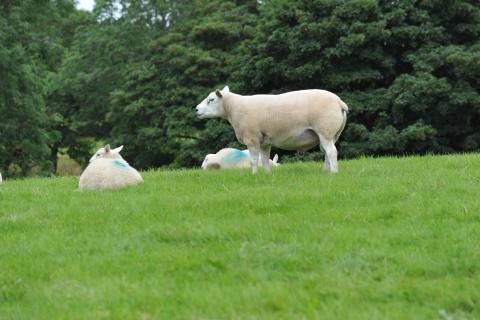CARRYING out health checks around six to eight weeks before mating will help ensure that rams and ewes enter the tupping period in peak condition. Production will drop if ram performance and ewe fertility fail to reach their full potential, ultimately affecting profitability.
A ram MOT should be carried out around eight weeks before mating to allow enough time to correct any issues. Also, stress can affect sperm stores and six weeks is needed to return to peak fertility. Any new tups coming onto the farm should be quarantined and checked. For the MOT, check that their mouth is sound, ensure vaccinations are up to date and treat for any parasites. Body condition score (BCS) of between 3.5 - 4 is preferred as the ram will lose some condition during mating.
“A good ram will lose weight when he’s working hard, so make sure they’re in good condition as you want them at their peak for tupping,” vet Kate Hovers told farmers at a Farming Connect discussion group meeting in Llanfyrnach, Pembrokeshire.
“Check the testicles, make sure they are the same size with no lumps and are firm; they should feel like a flexed bicep. Size matters for semen quality and quantity, so use a tape measure to check the testicles, a ram lamb should measure around 30cm, yearlings 34cm and older rams 36cm.”
It is very important to check the feet for any lameness issues as rams with poor mobility will not perform as well and also to prevent introducing any diseases such as Contagious Ovine Digital Dermatitis (CODD) to the farm. Lameness can also have a significant effect on ewe fertility and BCS.
“Ewes that are lame are likely to have fewer lambs, less milk and it affects the growth rate of the lambs, so they take longer to finish,” added Kate Hovers.
Getting ewe condition right is the most influential factor on reproductive performance. Go through the ewes six to eight weeks before tupping, aiming for scores of 2.5 - 3 for hill ewes, 3 for upland breeds and 3.5 for lowland ewes, and separate the poorer ones, putting them on to the best pasture.
“It takes four to six weeks to increase BCS by half a score off grass, but getting BCS right means a difference of about 30% in lambing percentage, so it’s well worth doing.”
As well as lameness, reasons for poor BCS include parasites, disease, nutrition and trace element deficiency.

